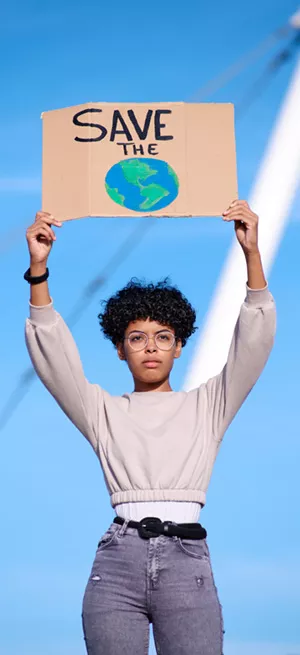
General ruling of the Civil High Court in Hamm: Corporate Responsibility for Climate Change Impacts exists in German law – depending on evidence in any specific case to show responsibility
On 13th November 2017 the Civil High Court in Hamm held the oral hearing of the appeal in the case of the Peruvian house owner Saúl Luciano Lluiya against RWE AG, the largest CO2 emitter in Europe which is responsible for 0,47% of global CO2 emissions based on the so-called Carbon Major’s Report.
In 2014, Saúl Luciano Lliuya has asked RWE to bear the costs of protection measures against a Glacial Outburst Flood (GLOF) from the glacial lake Palcacocha in the Peruvian Cordillera Blanca. In 2015, he filed claim. The court of the first instance held that “in all likelihood, in the case of a flood wave, the house of the claimant would be flooded” and that scientifically, climate change might be responsible. But on legal grounds it rejected the claim for protection measures in December 2016. The court order is here.
Saúl Luciano Lliuya appealed this judgement. Now the High Court in Hamm has essentially rejected the judgement of the court in Essen and has followed Saúl Luciano Lliuya’s legal reasoning on every point and rejected RWE’s claim that the law does not cover climate change since it is too “complex” and since everyone emits greenhouse gases.
The case will now move to the evidence phase.
This means that generally, responsibility of a large emitter for damage or risks in foreign countries exists as long as science can prove partial causation. This must now be determined for the concrete location by scientists to the conviction of the court. The court also generally accepted climate models as tools for giving legal evidence.
What is the case based on?
The case is based on the general “nuisance” provision of the German Civil Law code (BGB):
§ 1004 of the German Civil Code (BGB)
(1) If property is interfered with by means other than removal or retention of possession, the owner may require the disturber to remove the interference. If further interferences are to be feared, the owner may seek a prohibitory injunction.
(2) The claim is excluded if the owner is obliged to tolerate the interference.
Such a provision exists in many countries around the world.
What exactly does Saúl Luciano Lliuya want the court to rule?
The application is the following:
to determine that the respondent is liable, proportionate to its level of impairment of 0,47% to cover the expenses for appropriate safety precautions as undertaken by the claimant or third parties to protect the claimant’s property from a glacial lake outburst flood from Lake Palcacocha insofar the claimant is afflicted with such costs.
Therefore, Saúl Luciano Lliuya would not get any money or damages, but simply have the assurance that RWE will bear the share of these costs once the protection measures are carried out.
What did the first instance court say?
The court in Essen said that it is impossible to link emitters of CO2 to particular impacts in the context of legal causation. Lawyers all over the world use a formula to determine causation (conditio-sine-qua-non formula) which basically works like this: Causation is only found if the impairment in question (here: flood risk) was to cease if the conduct in question (historic and present emissions by RWE) were to cease. The court is Essen said that this was not the case since the flood risk would still be present without the 0,47% share of global CO2 emissions that can be attributed to RWE on the basis of the Heede study. This was also (according the court in Essen) set in precedent in a ruling of 1987 by the Federal Civil High Court (Bundesgerichtshof) in the context of acid rain. It also said that the part of RWE was insignificant in the context of global emissions.
What happened on the 13th of November 2017 at the High Court in Hamm?
The court opened the oral hearing and went through the whole wealth of legal issues of the claim reading a 60 page “Votum” – preparatory opinion. It set out in great detail why Saúl Luciano Lliuya’s claim is founded in law and rejected every single defense raised by RWE. It essentially quoted in many parts the written submissions by Saúl Luciano Lliuya’s lawyer. The public was present in the court room cheered at times.
The court did not decide on evidence, only on the general possibility of the case to proceed and be won if the evidence is presented to the satisfaction of the court. This is so because all of the facts of the case have been disputed by RWE and thus impartial evidence is needed.
The way the hearing on the 13th of November 2017 went was unusual and a surprise to everyone in the room. The court gave a fully reasoned and detailed explanation of its legal reasoning.
Can we get the Votum of the court now?
No, unfortunately the Votum is an internal document, which is in part reflected in the written decision announced on 30th November 2017. The Votum will be the basis for the final court order which will be submitted only after the evidentiary phase.
What did the OLG Hamm say?
The court said:
- The court has jurisdiction for the case and German law is applicable
- Climate change and the processes leading to impacts locally as well as the distance between emissions and impacts do not rule out the application of general nuisance or tort law, here § 1004 BGB.
- The 1987 judgement of the Federal Civil High Court (Bundesgerichtshof) on acid rain is not a precedent against finding responsibility for climate change impacts.
- While RWE emissions’ are not responsible for the whole flood risk due to glacial retreat, it is enough that these emissions are partially responsible for the actual, present risk. There is no basis in the law to argue that partial causation does not exist in this case.
- The share of emissions by RWE are not per se insignificant for the purposes of § 1004 BGB
- There are no formal or other impairments for the case to carry on
- There is a need to formally take evidence, see below.
The court asked RWE whether, on this basis, it would be prepared to settle. Saúl Luciano Lliuya offered to negotiate a settlement to speed up the procedure – he wants to solve the problem of the Laguna Palcacocha, not battle about experts and scientific detail. RWE rejected any settlement discussions.
What happened on the 30th of November 2017?
The court announced its decision on the 30th November 2017. As expected this decision includes an order to take evidence. This means that Parties are asked to provide names of experts that could be assigned to the areas of facts listed in the written decision of the OLG Hamm.
What is the role of climate models and science?
During the written procedure RWE had rejected climate models as eligible for proving causation in a court of law. Saúl Luciano Lliuya has argued that models are essentially technically aided expert statements. Models contain both facts and scientific assumptions. Saúl Luciano Lliuya also said that to show causation in this case, a specific attribution model is not needed given the clear statements of the IPCC fifth assessment report with respect to climate change impacts in the Cordillera Blanca:
- For the northern and central part of the Peruvian Andes, over the period from 1961-2009 a temperature increase of between 0.2 and 0.45% per decade was observed
- Tropical glaciers’ retreat has accelerated in the second half of the 20th century (area loss between 20 and 50%), especially since the late 1970s in association with increasing temperature in the same period.
- A rapid retreat and melting of the tropical Andes glaciers of Venezuela, Colombia, Ecuador, Peru and Bolivia has been further reported following the IPCC AR4, through use of diverse techniques (high confidence based on high agreement and robust evidence)
- “[The] [r]eduction in tropical glaciers and ice fields in extratropical and tropical Andes over the second half of the 20th century … can be attributed to an increase in temperature (...).”
- Overall there is a “very high degree of confidence” in the attribution of climate change to the glacier retreat in the Andes in South America.
These statements are a function of observations, i.e. of glacial mass and size as well as model-based studies on the causes for these observations. Saúl Luciano Lliuya has submitted evidence by IPCC authors (Dr. Christian Huggel, Prof. Mojib Latif) stating that the IPCC statements are applicable to his case.
The court has confirmed that it believes climate models to be fit to provide legal evidence depending on the circumstances and it also said that it is not necessarily imperative to build an attribution model (RWE had said, there was no proper evidence provided)– the way science determines whether RWE’s emissions are partially responsible for the current situation of the Laguna Palcacocha is a scientific determination.
